Monday 21 July 1941
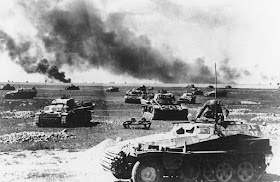 |
| A German Sd.Kfz-250 half-track in front of panzer units as they prepare for an attack, 21 July 1941. |
Hitler expresses his complete disinterest in capturing Moscow. As recorded in the OKW war diary:
In this regard it could then happen that 2. Panzergruppe turns to the south so that for the thrust on Moscow only infantry armies of Heeresgruppe Mitte remain. This eventuality does not worry the Führer because Moscow is for him only a geographical term.Needless to say, an infantry advance on Moscow without the customary panzer spearhead would at best be extremely slow and at worst be impossible.
To mark the one-month anniversary of Operation Barbarossa, the Luftwaffe begins a "Moscow Blitz." After dark, Heinkel He 111 pathfinders of KGr.100 and KGr.26 take off from an airfield near Smolensk to form the vanguard of a 127-plane force that drops 104 metric tons of bombs. The bombers come in successive waves that last a total of six hours. Anti-aircraft fire is heavy under the control of Soviet commander of Moscow air defense Major General M.S. Gromadin, so the bombs are scattered across the city. Some incendiaries land on the roof of the British Embassy but are put out quickly by embassy staff and the Moscow fire brigade. The Soviets apparently have been forewarned about the raid and thus are well-prepared. However, the Red Air Force barely makes an appearance, revealing the weakness of Soviet night-fighter defenses. Six Luftwaffe bombers fail to return.
In the Far North sector, Finnish VI Corps captures Salmi on the eastern shore of Lake Ladoga from Soviet 452nd Motorized Infantry Regiment. While not a particularly large town, it is an important landmark in the endless Karelian forests. The 1939 border is just beyond Salmi, and the Finns continue advancing forward toward the Svir River far to the southeast - but nobody knows what Mannerheim will do once the Finns reach the old border.
In the Army Group North sector, Hitler visits the army group headquarters and prepares to tour the front.
In the Army Group Center sector, General Guderian's Panzer Group 2 has trapped a large force of Soviet soldiers at Mogilev. The 4th Panzer Division (Major General W. von Langermann) takes about 2,000 prisoners, but he doesn't have enough infantry to capture the remaining 8-10,000 men, who escape.
In the Army Group South sector, the Germans take Vinnitsa (Vinnytsia) as several armies near forming a pocket around a huge Soviet troop concentration near Uman. Some 17,000 of the original Jewish population of Vinnitsa of 34,000 remain and persecutions begin virtually immediately. General von Kleist's panzers bear in on Uman and Tarashche. XLVIII Panzer Corps (General der Panzertruppe Werner Kempf) takes Monastyrishche.
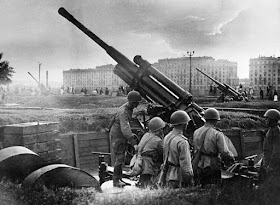 |
| Soviet soldiers defending Moscow are preparing anti-aircraft guns in Gorky Culture Park, July 1941. |
After dark, RAF Bomber Command sends 37 Wellington and 23 Hampden bombers on the first large raid against Frankfurt. The bombers apparently get lost, with most of the damage occurring in Darmstadt, which is about 15 miles from the target city. In the latter city, there are 16 deaths and 15 buildings destroyed or damaged. All of the planes return.
RAF Bomber Command also raids Mannheim. The 36 Wellington and 8 Halifax bombers cause only light damage in the target city and nearby Ludwigshafen. One Wellington is lost.
The RAF also sends 6 Wellingtons to bomb Cherbourg and two Hampdens to lay mines in the Frisian Islands off the Dutch coast.
Oblt. Johannes Seifert of 3./JG 26 shoots down a Spitfire fighter southwest of Ypres and a Stirling bomber of RAF No. 15 Squadron over the English Channel.
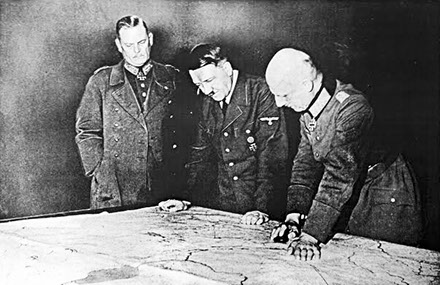 |
| Hitler with Field Marshal von Leeb at Malnava, Latvia, 21 July 1941. |
Finnish ships conduct minelaying operations.
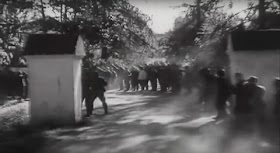 |
| Crowds saluting Hitler as he arrives in his open Mercedes at Malnava, Latvia, 21 July 1941. |
U-109 (Kptlt. Heinrich Bleichrodt), on its second patrol, refuels from German supply ship "Thalia," which is "interned" in the Spanish port of Cadiz. The Kriegsmarine actually has such tankers at three Spanish ports, which extend the range of U-boat missions and thus effectively increase the number of boats that can be kept on patrol.
The RAF bombs and sinks German transport Wandsbeck at Narvik, Norway.
German 1599-ton freighter Hans Christopherson hits a mine and sinks off Terschelling.
British freighters Bangalore and Richmond Castle collide in the middle of the Atlantic Ocean off the coast of Brazil. The Bangalore is badly damaged and ultimately is sunk by the Royal Navy for being a hazard to navigation.
Canadian troop convoy TC-12 departs from Halifax. It includes transports 20,021-ton Duchess of York, 21,517-ton Empress of Canada, 23,371-ton Orion, 23,428-ton Strathmore, and 22,283-ton Strathnaver. Among its escorts is battleship HMS Malaya, recently repaired in New York.
German raider Orion rounds Cape Horn into the Atlantic Ocean.
Convoy OB-349 departs from Liverpool. There will be no more OB convoys, from now on they will be designated ON.
Royal Navy destroyer Ashanti is recommissioned on the Tyne after extensive repairs.
Royal Navy minesweepers HMS Cadmus and Circe are laid down.
Canadian minesweeper HMCS Guysborough is launched at North Vancouver, British Columbia.
US destroyer USS Evans and John D. Henley, minesweepers Token, Tumult, and Velocity, and submarine Gunnel are laid down.
The Italian navy learns of Royal Navy activity in the western Mediterranean. However, the Regia Marina concludes that this is nothing but another case of a Royal Navy aircraft carrier launching planes to Malta and decides to keep its ships in port.
Greek submarine Glaukos (Lt. Commander Zepos) uses its deck gun to sink 21-ton Italian freighter San Nicola four miles northwest of Rhodes.
The men of Royal Navy submarine HMS Taku engage in some derring-do by landing a small party in Benghazi Harbor. The commandos attach timed explosive charges to a ship and then escape safely.
Operation Guillotine, a British troop movement from Egypt to Cyprus, continues. Royal Navy corvette HMS Peony departs Port Said with 1712-ton Dutch freighter Trajanus heading for Famagusta. Royal Navy sloop Flamingo departs Alexandria for Port Said in order to escort another transport, HMT Kevinbank, from there to Famagusta.
An Axis convoy departs Naples bound for Tripoli. It includes 5479-ton freighter Maddalena Odero, 6003-ton freighter Nicolo Odero, 6476-ton freighter Caffaro, and 8203-ton freighter Preussen. Royal Navy submarine Olympus spots the ships and attacks but misses.
Royal Navy destroyer HMS Ilex, having undergone emergency repairs, departs from Port Said through the Suez Canal in order to make final repairs at Durban.
At Malta, the Inspector General of the Royal Air Force, Sir Edgar Ludlow-Hewitt, visit the base at Kalafrana.
Battle of the Pacific: Australian troops (Robin Force) arrive at New Caledonia with 3rd Independent Company and two six-inch guns.
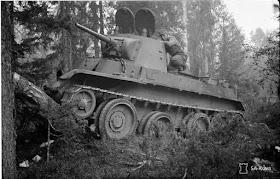 |
| A Finnish soldier on a captured Soviet BT-7 tank, 21 July 1941. The tank is being used to fell trees, perhaps to build a road (SA-Kuva). |
In fact, one area of occupied Europe already is in revolt. In Montenegro, partisan rebels have occupied a wide swathe of territory. General Cavallero, the Commander-in-Chief of the Italian Army Group in Albania, has ordered General Alessandro Pirzio Biroli to suppress the uprising "at whatever cost."
Japanese/Vichy French Relations: Vice-Premier Darlan accepts the Japanese request for basing rights in French Indochina. He comments that France has no choice in the matter, and plaintively asks the Japanese to recognize French sovereignty and to not molest French troops or evict them from their posts.
This confirms Japanese military dominance in Southeast Asia, with only the British bases in Singapore and Hong Kong, the Dutch in the East Indies, and the Americans in the Philippines and Guam to dispute it. The tentative protocol as drafted by the French provides that the use of facilities by the Japanese could not, under any circumstances, have the character of military occupation. Japanese forces are not to exceed 25,000 men.
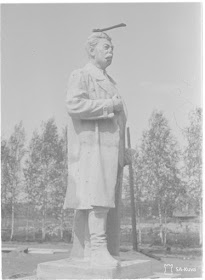 |
| Harlu, 21 July 1941. Someone has very skillfully thrown an ax into Stalin's head (SA-Kuva). |
Free France, that is to say France, is no longer willing to entrust to the British military command the duty of exercising command over the French troops in the Middle East. General de Gaulle and the French Empire Defence Council are resuming full and entire disposal of all the French forces of the Levant as from 24 July 1941, at midday.Lyttelton rightly objects that this demand is an ultimatum that breaks the Anglo/Free French alliance. De Gaulle responds that the British can take it any way that they like. However, at dinner, after he has gotten some rest, de Gaulle settles for various concessions that salve his injured pride. These include recognition of France's historic position within the Levant, use of Vichy French equipment (much of which is quite good), and the right to recruit Vichy French soldiers. General Dentz, who retains control over his Vichy troops, however, is not fond of de Gaulle and keeps defections to de Gaulle down to 6,000 men.
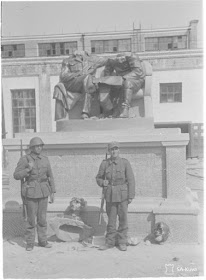 |
| 21 July 1941, Harlu. Two Finnish soldiers pose next to a decapitated statue of Lenin and Stalin. |
German/Croatian Relations: Hitler meets with Slavko Kvaternik, Ustasha co-founder and leader of the NDH military, at the Wolfshanze Fuhrer Headquarters in East Prussia. Foreign Minister Joachim Ribbentrop and OKW head Wilhelm Keitel also attend the meeting. The Propaganda Ministry films the welcoming ceremony for the newsreels.
German/Ukranian Relations: The Germans imprison Ukrainian nationalist leader Stefan Bandera.
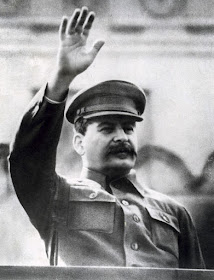 |
| Joseph Stalin, July 1941. |
Australian Military: The Royal Australian Navy establishes the Naval Auxiliary Patrol. It uses peacetime pleasure cruisers that become known as "nappies."
US Military: The Selective Service Act which drafts young men into the military is about to expire, so President Roosevelt asks Congress to declare a full or limited national emergency in order to extend it. Drafted soldiers now serve for only a year, and Roosevelt wishes to retain them for an additional 30 months.
German Government: As he often does, Hitler sits at his dinner table with his cronies late into the night expounding on his various theories and philosophies. He says of Benito Mussolini:
I must say, I always enjoy meeting the Duce. He's a great personality... The march on Rome, in 1922, was one of the turning-points of history... If Mussolini had been outdistanced by Marxism, I don't know whether we could have succeeded in holding out. At that period National Socialism was a very fragile growth.After further rambling about the glories of Italian architecture, he concludes, "My dearest wish would be to be able to wander about in Italy as an unknown painter."
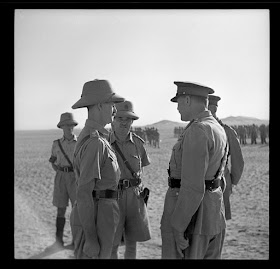 |
| Three key commanders of the failed Crete campaign confer at Helwan, Egypt, on 21 July 1941. Left to right: Lieutenant-Colonel Andrew, 22nd Battalion; Brigadier Hargest, 5th (NZ) Brigade; Major-General Freyberg, 2nd New Zealand Division and Creforce (New Zealand History). |
Romanian soldiers force all of the Jews in Ozarintsy into the town synagogue. After a few hours, they take 43 Jewish men into the Polish cemetery and execute them.
At the village of Felitsianovka near Vinnytsia, the Germans execute 21 Jews.
The Germans take 12 Jews in Chernevtsy near Vinnytsia to the machine and tractor station and execute them.
An SS unit enters Sudilkov and takes all of the town's Jews from their homes to the ghetto of Shepetovka. From there, the Germans take some to the forest on the road to Klementovichi and execute them.
At Minsk, the Germans order 45 Jews to dig a pit and then get in it. They then order Russian prisoners to bury them alive. After the 30 Russians refuse, they are forced into the pit also and everyone in the pit is shot, then buried.
Eleanore Roosevelt writes in her "My Day" column about National Youth Administration leader Aubrey Wills Williams and the dedication of a new National Youth Administration training center that she attended a few days ago. Williams champions civil rights for African-Americans and uses his NYA position to provide vocational training and educational opportunities for disadvantaged youth.
After beginning the year slowly, the New York Yankees now lead second-place Cleveland by seven games and Boston by 14 in the American League. In the National League, the Brooklyn Dodgers lead St. Louis by only one game.
July 1941
July 1, 1941: US TV Broadcasting Starts
July 2, 1941: MAUD Report
July 3, 1941: Stalin Speaks
July 4, 1941: Pogroms in Eastern Europe
July 5, 1941: Germans on Schedule
July 6, 1941: Australians Attack Damour
July 7, 1941: US Marines in Iceland
July 8, 1941: Flying Fortresses In Action
July 9, 1941: British Take Damour
July 10, 1941: Sword and Scabbard Order
July 11, 1941: Cease-fire in Syria and Lebanon
July 12, 1941: Anglo/Russian Assistance Pact
July 13, 1941: Uprising in Montenegro
July 14, 1941: Katyusha Rocket Launchers in Action
July 15, 1941: Smolensk Falls
July 16, 1941: Stalin's Son Captured
July 17, 1941: Heydrich Orders Mass Executions
July 18, 1941: Twin Pimples Raid
July 19, 1941: V for Victory
July 20, 1941: The Man Who Wouldn't Shoot
July 21, 1941: Moscow in Flames
July 22, 1941: Soviet Generals Executed
July 23, 1941: Secret Plan JB 355
July 24, 1941: Operation Sunrise
July 25, 1941: US Naval Alert
July 26, 1941: Italian E-Boat Attack on Malta
July 27, 1941: MacArthur Returns
July 28, 1941: Auschwitz Exterminations
July 29, 1941: Rescue From Crete
July 30, 1941: Raid on Petsamo and Kirkenes
July 31, 1941: Final Solution Order
2020
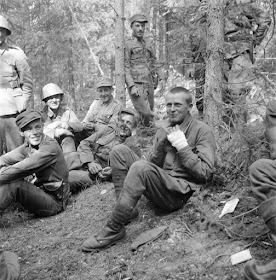


No comments:
Post a Comment